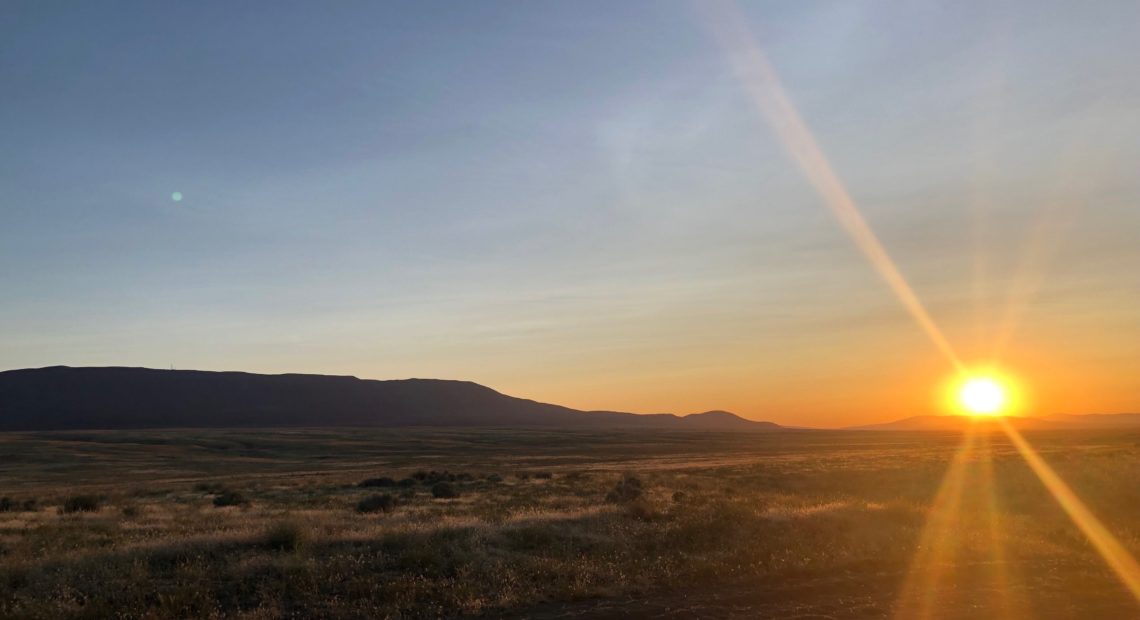
‘It’s Irreversible’: Goldendale Green Energy Project Highlights A History Of Native Dispossession
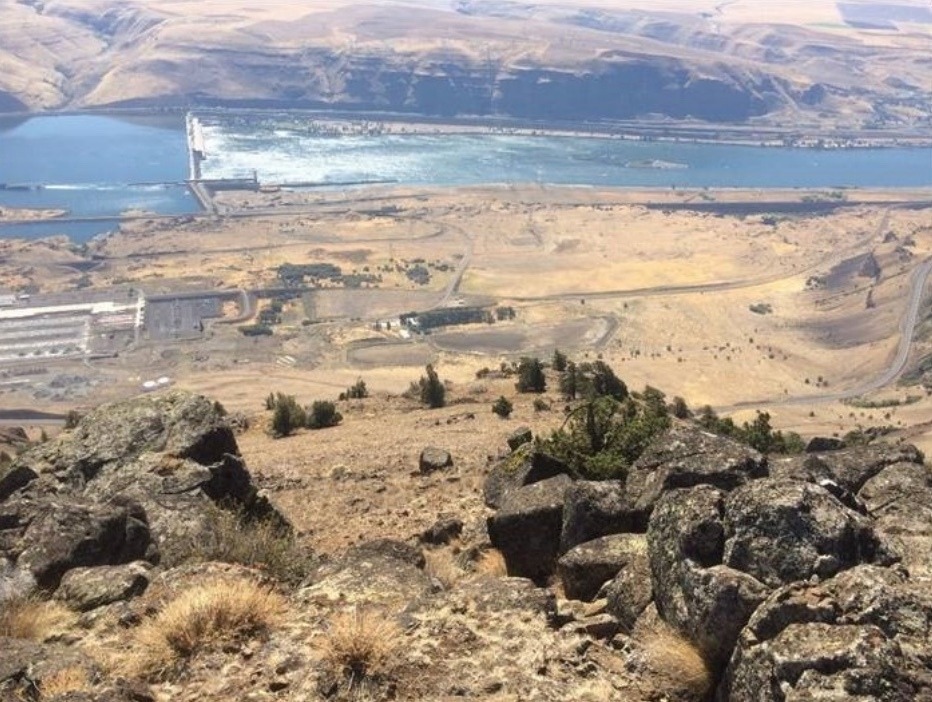
Listen
Some 15,000 years ago, an ice dam broke in Montana. Water cascaded across the Northwest in some of the largest flooding ever to happen on Earth. And the Ka-milt-pah people climbed up to one of the highest points on the Columbia River.
“There were lookouts and warnings to the Ka-milt-pah band members. Prior to the big flood, they escaped the canyon,” says Elaine Harvey, a Ka-milt-pah member, known in English as the Rock Creek Band of the Yakama Nation.
As the stories go, the area known as Put-a-lish, or the Goodnoe Hills, is where people survived the walls of water slamming downstream in the Missoula Floods.
The height of those hills protected Harvey’s ancestors. It’s also a reason this area is being considered for a new energy storage project. It’s one that the Yakama Nation says would land smack dab on top of an incredibly sacred area.
“This whole area is really sacred from the bottom all the way to the top (reservoirs), where they want to build this pump storage (project),” Harvey says.
This spot is known for some of the best traditional food and medicine gathering around – so good that other tribes and bands travel to the ridge and land below, known as As-num. It’s also home to her band’s longhouse, an ancient village site and important cultural ceremonies.
From the ridge to the river, the Yakama Nation says traditional cultural properties are “a remnant of what was once along the Columbia River.”
The project and the mountain
The Goldendale Energy Storage Project would be a solution to generate energy when the sun isn’t shining or the wind isn’t blowing. When there’s too much energy on the grid, water would be pumped into an upper storage reservoir. Then, when more energy is needed, it could be spilled through turbines into a lower pool of water – currently the cleanup site of an old aluminum smelter.
It would be the largest pumped storage project in the Northwest.
But, to the Yakama Nation, the destruction of those sites would add another heartbreak to an ever-expanding list. Countless important cultural areas have faced destruction across the Northwest, largely because they’re not understood by non-tribal members.
“That’s the thing that we protect. And I know it’s meaningless to others, but, to us, it means everything,” says Jerry Meninick, the Yakama Nation’s deputy director for culture. Meninick’s lineage traces back to the Rock Creek Band.
One such place is Laliik, also known as Rattlesnake Mountain, northwest of Richland. For local hikers and flora enthusiasts, the closed-off ridge has long beckoned.
ALSO SEE: Northwest Tribes Lament Fire On Rattlesnake Mountain
But for the Yakama Nation, those calls for more trails to ascend sound instead like the dispossession of one of the tribe’s most sacred sites. In this place, Meninick says the slightest noise – voices from nearby hikers, feet crunching up a trail – would disturb the “pristine atmosphere.”
“It’s like a pool of water that’s like a mirror. Anything, even noise disrupts that,” Meninick says.
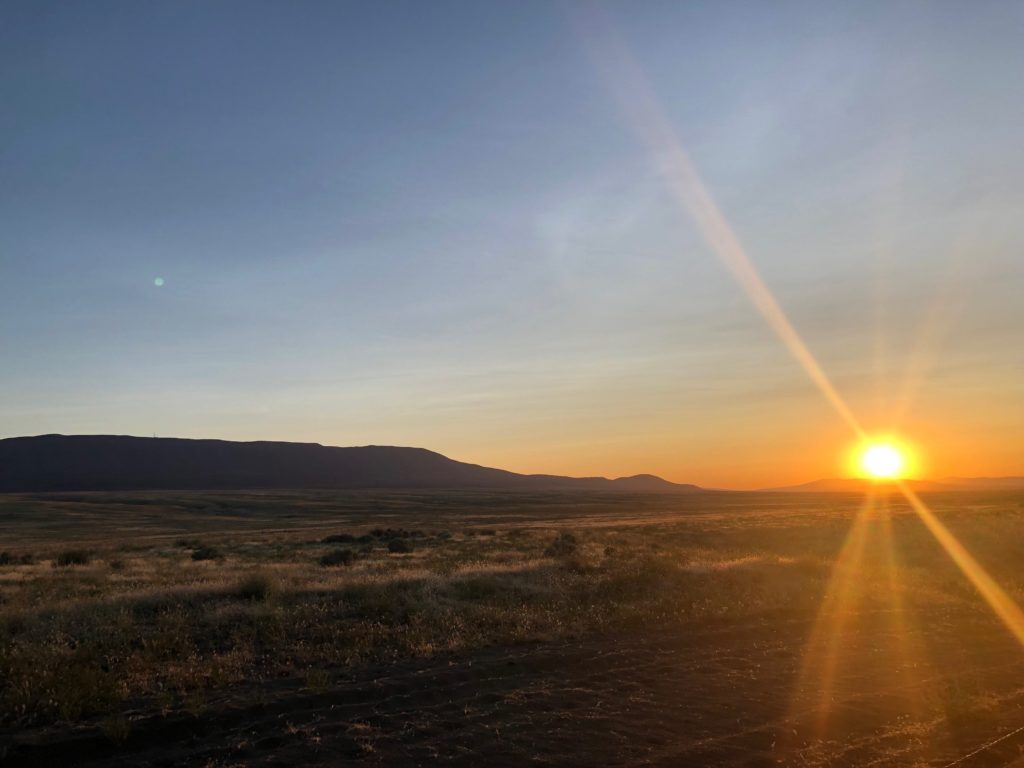
Rattlesnake Mountain on the Hanford Reach National Monument has restricted and protected access. It’s considered a sacred site by Northwest tribes, including the Yakama Nation and Confederated Tribes of the Umatilla. CREDIT: Anna King/N3
Meninick saw people worldwide in tears over the destruction of a sacred Christian monument in France.
He says he told those considering opening up Rattlesnake Mountain: “The whole world is in pain right now and in sorrow because of a fire (at Notre Dame). How do you think we feel? Because this, too, is like that church to us.”
The feeling isn’t new to Northwest tribes.
A history of dispossession
From the settlement of Seattle to dam construction that flooded Celilo Falls on the Columbia River, Northwest tribes have all faced numerous types of dispossession, says University of Washington history professor Josh Reid, an enrolled member of the Snohomish Indian Nation.
“This isn’t just something that happened in the safety of the past where we can all find peace (and say), ‘These things no longer happen nowadays.’ No, they continue to happen” Reid says “And it just builds on this very long historical legacy of dispossessing Native peoples from their homelands.”
Homelands where Reid says Native peoples’ identity was “rooted and anchored.”
“These homelands provided a good life for us – a life in which we could thrive, were wealthy and were successful, and had our own forms of civilization and ways of living that made us who we were and who we are as Indigenous peoples, as very specific members of tribal nations,” he says.
That’s why Reid says Native peoples work hard to reclaim their homelands. Take one example, out of hundreds in Washington alone: Olympic National Park. The park abuts eight tribal nations, including the Quinault, Hoh, Quileute, and Makah.
Treaties have reserved all usual and accustomed grounds for fishing, hunting and gathering. But when the park was built, the tribes were shut out of those areas. Like the Makah Nation members, who used camas fields and harvested cedar bark.
“They would harvest the cedar bark to use and make baskets and nets and other kinds of cedar-based material products. And of course, the park wasn’t keen on having Indians wander into the park and strip cedar bark from trees because it didn’t make it look natural,” Reid says.
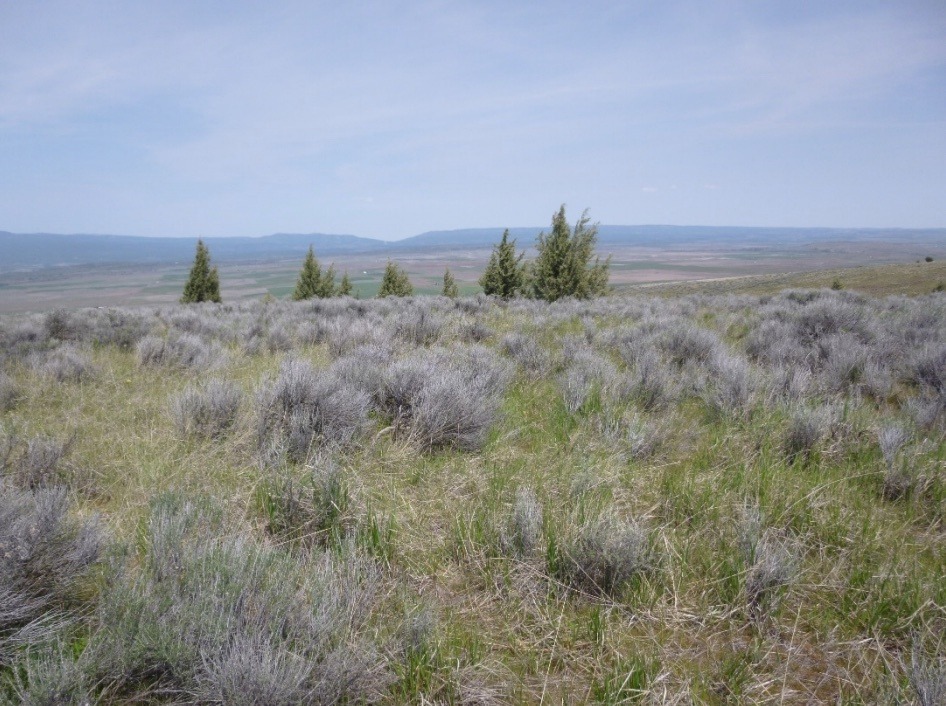
The proposed upper reservoir area near the north edge of the Goldendale Energy Storage Project would be located on land considered sacred by the Yakama Nation and other area tribes. Courtesy of Rye Development/FERC application
Through a lot of hard work, Reid says the Makah Nation has maintained their treaty rights with park administrators. That work continues each time someone new takes the job.
He says similar issues have played out with the Blackfeet Nation in Montana, when Glacier National Park was carved out of their reservation. Park officials wouldn’t allow tribal members to hunt elk in the park, which the tribe calls the “Backbone of the World.”
“So the Blackfeet, in the early 20th century were just like, ‘Um, yeah, screw that.’ And so part of being Blackfeet became crossing illegally into the park and taking your elk, despite all the efforts the park officials made trying to keep them out. And so even in the face of really clear, severe dispossession, Native peoples strive to find ways to maintain that relationship with their homelands,” Reid says.
He says dispossessing homelands is “more painful than just being kicked out of where you had a livelihood.” But in the face of all that, he says, they continue fighting.
The treaties, he stressed, do not give tribes rights or reservations. Tribal leaders negotiated and kept rights for their people – a payment from non-natives for ceded lands, which were traditional homelands that tribes yielded to the U.S. government.
The proposed Goldendale Energy Storage Project would be built on Yakama Nation ceded lands.
“This comes up time and time again. So when you tell me about this energy storage solution, it’s like, man, we haven’t learned a damn thing,” Reid said.
Lackluster consultation
The Yakama Nation’s Jerry Meninick says consultation has been lackluster, as always. He says it’s almost more of a notification – the tribes get a letter or an email, and that’s that.
He says they feel unheard, no matter how often and how loud the tribe opposes a project.
“I understand that communication from these project developers and from these investors – when it comes to our time to almost be at the table – that’s a common courtesy that’s extended because it’s required. Even if the tribe don’t show up, it don’t make no difference to them,” Meninick says.
When project reviews deem they have no significant environmental harms, “the connection to tribes ends right there,” he says.
Efforts to make the consultation process more inclusive have been in the works.
Right now, the Goldendale project is going through multiple licensing and scoping projects. The Washington Department of Ecology says it’s just started reaching out to the Yakama Nation during the very beginning of its environmental study. (The department has determined the project is likely to have “significant environmental impacts,” and thus needs more review.)
In the review process, “the cultural and archeological studies and evaluations from the tribe are on equal footing with any other environmental impact that needs to be addressed,” said Ecology spokesperson Joye Redfield-Wilder.
As for the federal licensing process, the Federal Energy Regulatory Commission did not respond to requests for comment, although there will be a consultation as well.
Last year Gov. Jay Inslee signed into law a bill that designated some pumped storage projects as ones of statewide significance, which could lead to expedited permitting and environmental review processes. The law requires a plan for consultation “with affected tribes,” which developers say would be a third path to meaningfully talking with tribes.
Rye Development and National Grid are leading the way for the Goldendale storage project until construction begins. The companies jointly began the project (and a similar facility near Klamath Falls, Oregon) before the projects were purchased by the Danish investment firm Copenhagen Infrastructure Partners.
“We understand the sensitivity of large development of any kind in large portions of Washington,” says Erik Steimle, vice president of Rye Development. “We’re committed to working collaboratively with the Yakama Nation and other (tribes). We’ve engaged the Umatilla and Nez Perce as well.”
The Confederated Tribes of the Umatilla Indian Reservation (CTUIR) has voiced concerns regarding “historic property of religious and cultural significance.”
In a correspondence to a CTUIR archeologist, Steimle wrote: “We will continue to work with you to solicit information on important resources to the CTUIR and focus on resolving significant issues or concerns.”
The company stated in a 2020 FERC final license application that building the facility largely on top of a brownfield site – private land that was previously an aluminum smelter – has “relatively reduced potential for impacts to environmental and social resources.” In other words, they say this area hasn’t had traditional food gathering for sometime.
Steimle says the Northwest can’t meet its clean energy goals without a “massive amount of additional storage capacity, which this project can provide, with minimal environmental impacts.”
A coalition of 15 environmental groups recently sent a letter to the Washington and Oregon governors and senators urging the officials to “stand in solidarity with sovereign Tribal Nations.”
Imagining the future
Elaine Harvey, who lives near Put-a-lish, the site of the proposed pumped storage project, says she’s looking forward to one day becoming the head food gatherer in the area. Right now, that duty falls to her mom and her aunts.
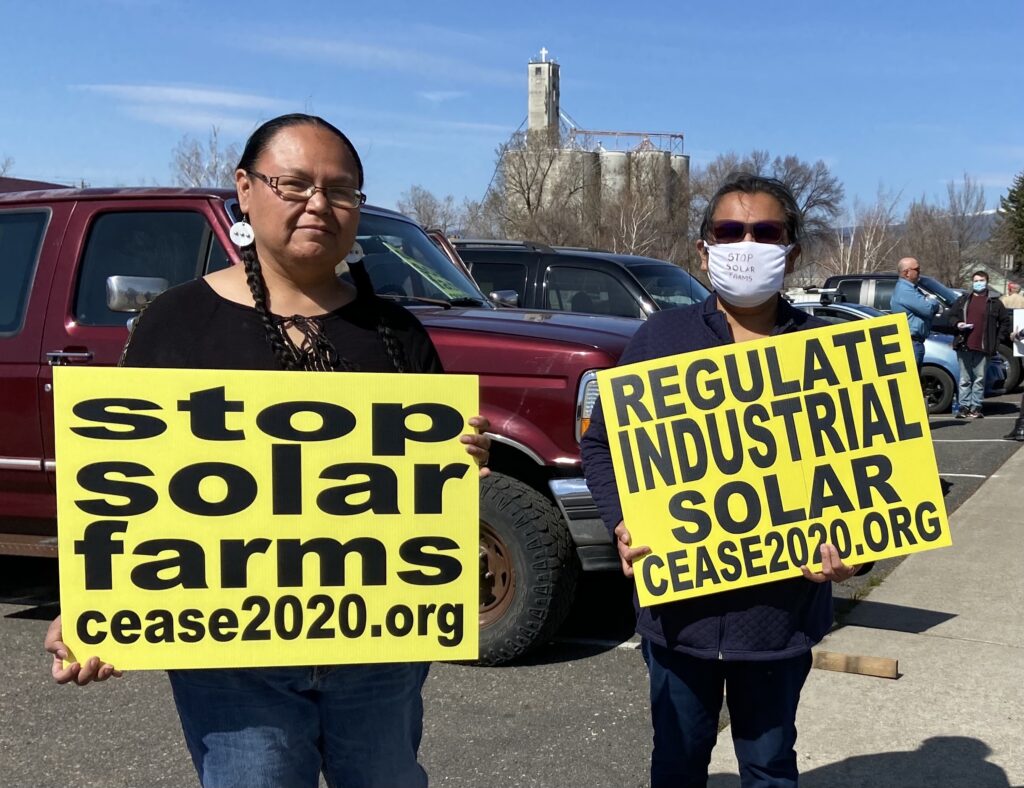
Elaine Harvey, left, a member of the Rock Creek band, Ka-milt-pah, of the Yakama Nation, at an April 1, 2021 demonstration in Goldendale opposing a solar farm project. CREDIT: Courtney Flatt/NWPB
Every year, a local farmer opens his gates for tribal members to gather food across the road from where the pumped storage project would be. Now, they gather roots underneath spinning wind turbines.
Harvey imagines, years from now, driving to her longhouse with her children and grandchildren in the backseat. She’s driving past the ridge where they once gathered first foods and she has to tell the kids what the large pools of water used for electricity generation used to be.
“It’s hard to think about that. … Green energy is not so green if it’s creating so much environmental injustice,” Harvey says. “It’s not going to come back after you destroy it. It’s irreversible.”
Related Stories:
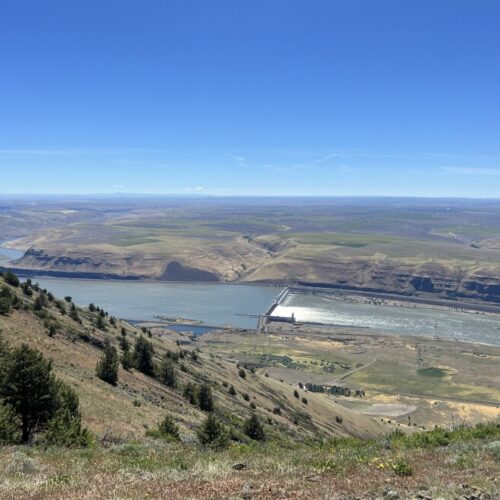
Controversial energy project moves closer to breaking ground
A view from the edge of the cliff where the Goldendale Energy Storage Project could be built. An underground tunnel would carry water from a upper reservoir to a reservoir

Federal regulators want public input on Goldendale Energy Storage Project
A view from the edge of the cliff where the Goldendale Energy Storage Project could be built. An underground tunnel would carry water from a upper reservoir to a reservoir
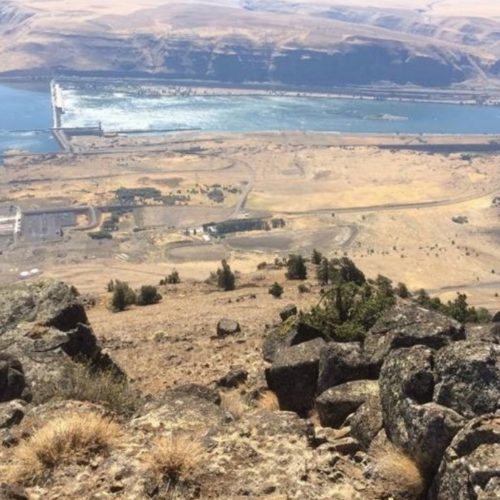
Washington Denies Permit For Goldendale Pumped Hydro Project, But It’s Not The End Of The Road
A large energy storage project in Washington will have to reapply for important water quality certifications. The state recently denied the certification because officials didn’t have enough information about the Goldendale Energy Storage Project.















